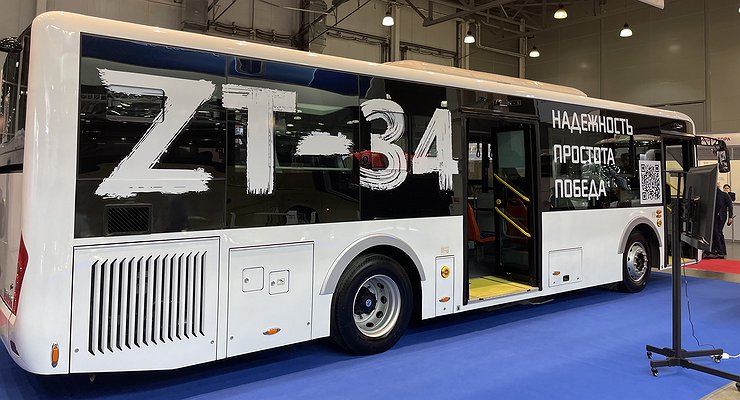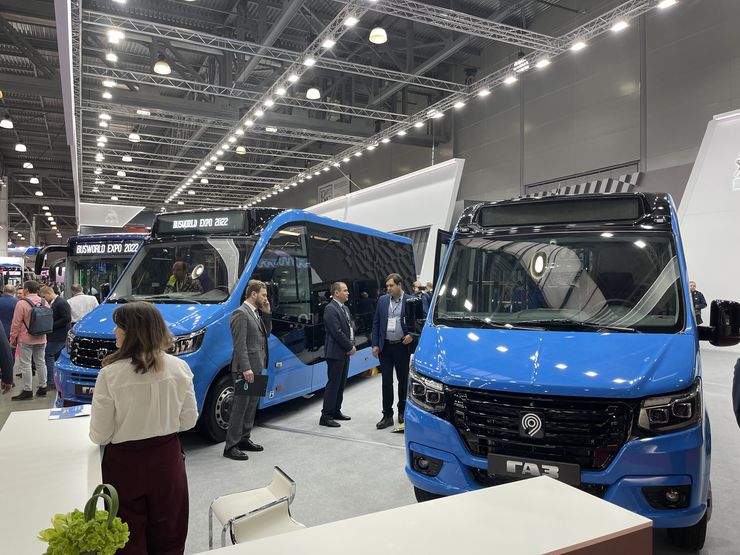The international exhibition of bus equipment BW Expo-2022 has opened in Moscow. True, the appearance of Russian companies on it, it seemed to us, was intended not so much to demonstrate the capabilities of new technologies as to the fact that the companies themselves still exist. But not without interesting projects. Portal “AutoVzglyad” reveals the details.
If earlier at such an event it was necessary to walk for a long time among the booths of companies presenting their views on the problems of passenger mobility, now the entire exposition can be viewed from almost one point. Two rows of buses symbolically end in a dead end, approaching it, Russian and Belarusian manufacturers are replaced by Chinese ones. However, this does not mean that there were no interesting domestic solutions. Despite the isolation, this segment of the car market may not be alive, but at least it is surviving.
And then KamAZ surprised by showing a completely futuristic post-apocalyptic bus. All-wheel drive KAMAZ-6250 is designed to transport people to places where there are no roads and never have been. Stylistically, it is very similar to the brand’s rally-raid race cars. Yes, and made clear using the company’s motorsport experience.
Four-wheel drive, huge wheels 425 / 85R21, winch for 8 tons, ground clearance of 390 millimeters. A powerful engine of 213 kW, a torque of 1100 Nm and even running on environmentally friendly LNG! The bus has 32 seats. And, most importantly, this is no longer a prototype: the car was commissioned by Gazprom, and the company plans to produce about 500 copies.
However, GAZ Group boasted the largest stand, with 9 public transport models, two of which aroused the most interest. This is an electric modification of the Gazelle e-City and E-Citymax 12 of the Pavlovsk Bus Plant. The first is designed to carry 16 passengers and has a range of up to 150 km, which is sufficient for most urban routes. Although from the point of view of some breakthrough technologies, this car has nothing to offer.
But the E-Citymax 12, with a capacity of 85 people, has not only increased a range to 200 km, but also uses motor wheel technology that improves driving characteristics and therefore safety. And energy recovery is more efficient.
In fairness, it should be noted that all this splendor is based on Chinese components. But the only thing that matters to the end user is how well and seamlessly everything works. By the way, the bus body is composed of composite panels, which makes it almost eternal.
It is amazing that the evolution of trolleybuses continues. The exhibition presented a new generation of the Admiral trolleybus from the Transport Systems PC. In addition to its modern appearance, it is curious that the antennas (the “whiskers” with which it connects to the contact wires) are now controlled remotely, without the need however, to pull manually Moscow stopped trolleybuses due to problems with power lines and problems with the flexible transformation of traffic routes.
Although, according to some calculations, the operation of such equipment is economically more attractive in the long run, even against the background of other electric vehicles. However, the hungry Chinese tiger is keeping a close eye on all this and is preparing for a powerful leap to conquer this segment of the Russian market as well. I wonder how long the state will be able to protect domestic automakers from mass extinction without creating favorable conditions for their existence?
If earlier at such an event it was necessary to walk for a long time among the booths of companies presenting their views on the problems of passenger mobility, now the entire exposition can be viewed from almost one point. Two rows of buses symbolically end in a dead end, approaching it, Russian and Belarusian manufacturers are replaced by Chinese ones. However, this does not mean that there were no interesting domestic solutions. Despite the isolation, this segment of the car market may not be alive, but at least it is surviving.
And then KamAZ surprised by showing a completely futuristic post-apocalyptic bus. All-wheel drive KAMAZ-6250 is designed to transport people to places where there are no roads and never have been. Stylistically, it is very similar to the brand’s rally-raid race cars. Yes, and made clear using the company’s motorsport experience.
Four-wheel drive, huge wheels 425 / 85R21, winch for 8 tons, ground clearance of 390 millimeters. A powerful engine of 213 kW, a torque of 1100 Nm and even running on environmentally friendly LNG! The bus has 32 seats. And, most importantly, this is no longer a prototype: the car was commissioned by Gazprom, and the company plans to produce about 500 copies.
However, GAZ Group boasted the largest stand, with 9 public transport models, two of which aroused the most interest. This is an electric modification of the Gazelle e-City and E-Citymax 12 of the Pavlovsk Bus Plant. The first is designed to carry 16 passengers and has a range of up to 150 km, which is sufficient for most urban routes. Although from the point of view of some breakthrough technologies, this car has nothing to offer.
But the E-Citymax 12, with a capacity of 85 people, has not only increased a range to 200 km, but also uses motor wheel technology that improves driving characteristics and therefore safety. And energy recovery is more efficient.
In fairness, it should be noted that all this splendor is based on Chinese components. But the only thing that matters to the end user is how well and seamlessly everything works. By the way, the bus body is composed of composite panels, which makes it almost eternal.
It is amazing that the evolution of trolleybuses continues. The exhibition presented a new generation of the Admiral trolleybus from the Transport Systems PC. In addition to its modern appearance, it is curious that the antennas (the “whiskers” with which it connects to the contact wires) are now controlled remotely, without the need however, to pull manually Moscow stopped trolleybuses due to problems with power lines and problems with the flexible transformation of traffic routes.
Although, according to some calculations, the operation of such equipment is economically more attractive in the long run, even against the background of other electric vehicles. However, the hungry Chinese tiger is keeping a close eye on all this and is preparing for a powerful leap to conquer this segment of the Russian market as well. I wonder how long the state will be able to protect domestic automakers from mass extinction without creating favorable conditions for their existence?
Source: Avto Vzglyad
Donald Salinas is an experienced automobile journalist and writer for Div Bracket. He brings his readers the latest news and developments from the world of automobiles, offering a unique and knowledgeable perspective on the latest trends and innovations in the automotive industry.















